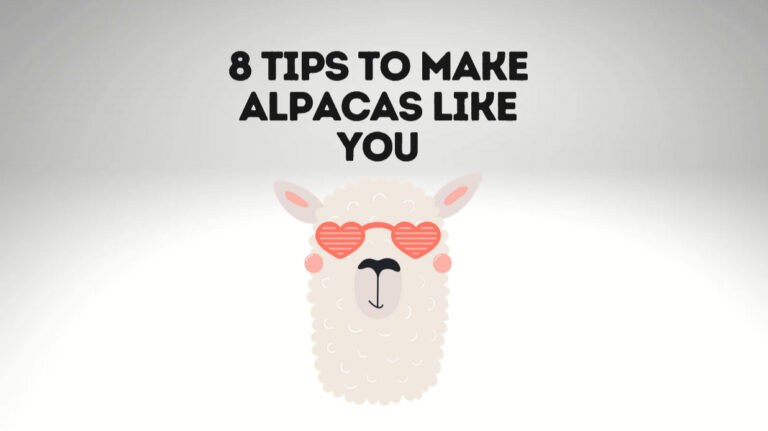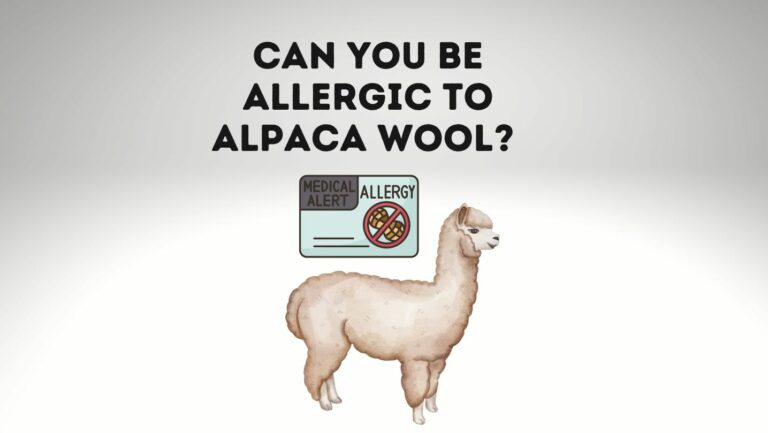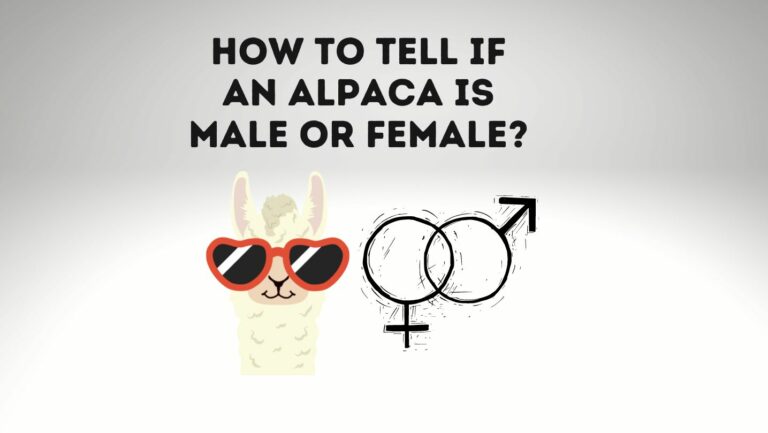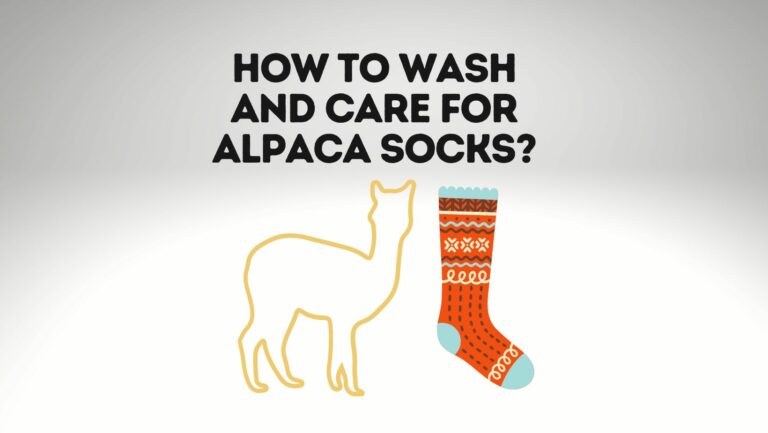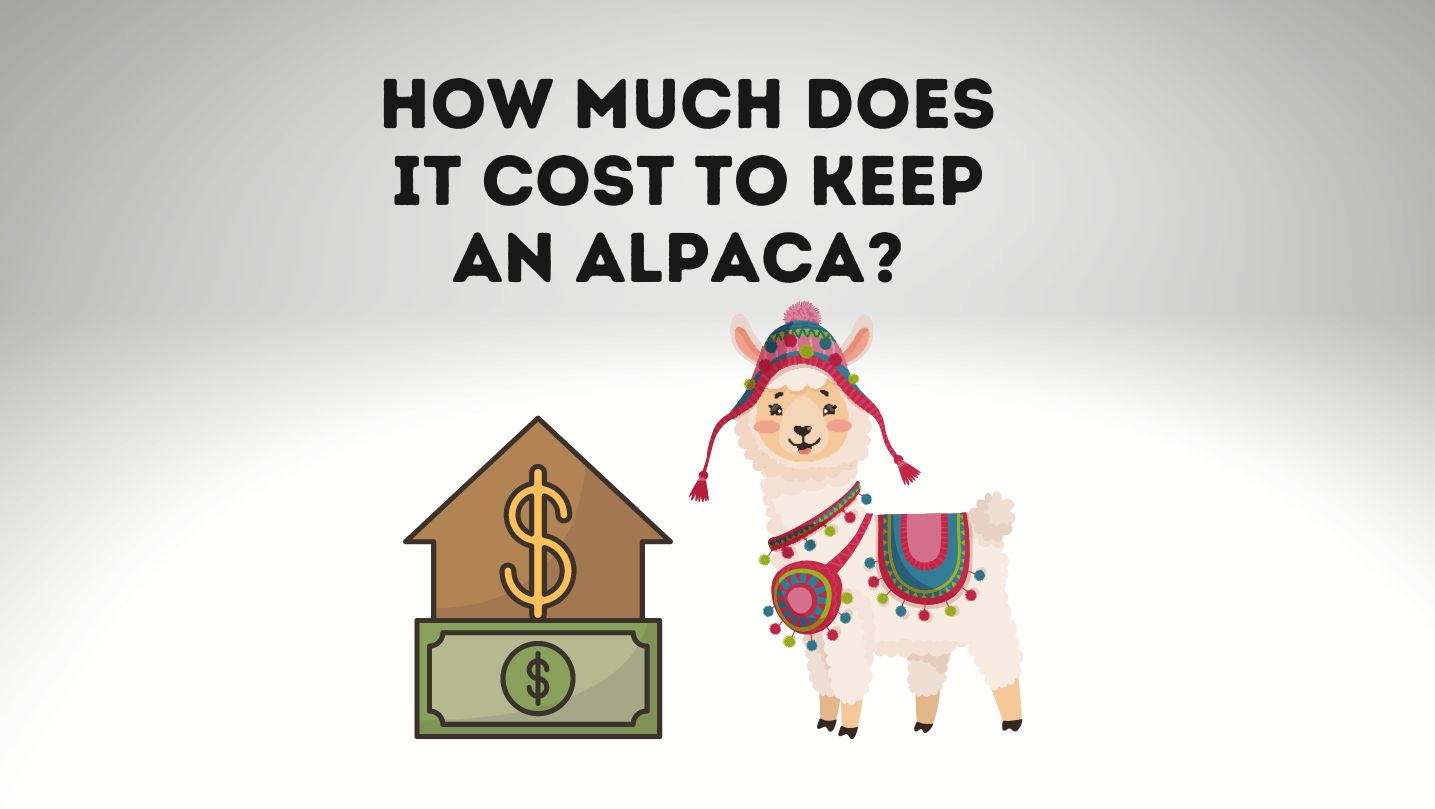
Alpacas are becoming increasingly popular in recent years as pets, as their fluffy wool has made them a go-to for those looking for a unique way to pamper their loved ones. But just how much does it cost to keep an Alpaca? In this blog post, we’ll explore the associated costs of caring for an alpaca, from food to vet bills and more. We’ll also look at some other important considerations that you need to keep in mind when deciding whether or not to adopt one of these adorable creatures. Read on to find out all you need to know about keeping an alpaca!
Post Contents
- 1 1) The Cost Of Buying An Alpaca Pack of 3
- 2 2) Alpaca Registration Cost
- 3 3) The Cost Of Feeding An Alpaca
- 4 4) The Cost Of Housing An Alpaca
- 5 5) The Cost of Bovine Viral Diarrhea and Fecal Test
- 6 6) The Cost Of Vet Care and Vaccines For Alpaca
- 7 7) Influence Due To Supply and Demand
- 8 8) Miscellaneous Costs Associated With Keeping An Alpaca
- 9 How To Save Money On Alpaca Care?
- 10 Are Alpacas High Maintenance?
- 11 Why Do You Need 3 Alpacas?
- 12 Revenue Opportunities from Alpaca
- 13 Conclusion
1) The Cost Of Buying An Alpaca Pack of 3
The cost of buying an Alpaca pack of 3 can range from $1500 to $1,5000. The price will depend on the quality of the Alpacas and where you purchase them from. When buying Alpacas, it is important to remember that you are also responsible for their care and feeding. Alpacas require a lot of hay and fresh water, so be sure to factor that into your budget as well.
The price of alpacas also depends on quality Pet Quality Whether it is Hobby or Show Quality.
Regular Pet Alpacas cost around $2000 and Below
Show Quality Alpacas cost $15000 and above in some case
Hobby Quality Alpacas cost $6000 and below.
2) Alpaca Registration Cost
Alpacas are registered with either the Alpaca Owners and Breeders Association (AOBA) or the International Alpaca Association (IAA).
The cost of registering an alpaca with AOBA is $50 for the first alpaca and $25 for each additional alpaca.
The cost of registering an alpaca with IAA is $40 for the first alpaca and $20 for each additional alpaca. The Total cost will be around $165 approx.
3) The Cost Of Feeding An Alpaca
The cost of feeding an Alpaca will depend on the age, weight, and activity level of your Alpaca. A baby Alpaca will need to be fed more often than an adult Alpaca. An adult Alpaca should be fed 2-3 times a day. The diet of an Alpaca should consist of hay, pellets, vegetables, and water.
A bale of hay can cost anywhere from $5-$20 depending on the quality and type of hay. A 50 lb bag of pellets can cost around $30. The cost of vegetables will vary depending on what you feed your Alpaca and where you purchase them from. It is important to make sure your Alpaca has access to clean water at all times.
| Shearing Cost | $35 | $105 |
| Vaccination Cost | $20 | $60 |
| Hay or Fodder | $100 | $300 |
| Nutrients and Grains | $120 | $360 |
| Bedding Straw Cost | $22 | $66 |
| Sawdust for Litter Box | $35 | $105 |
| Onsite Vet Check Costs | $37 | $37 |
| Annual Cost Per Alpaca | $369 | $1,107 |
4) The Cost Of Housing An Alpaca
Assuming you have the pasture and fencing already set up for other livestock, the average cost of purchasing an alpaca is between $600 and $1,000. The cost of housing an alpaca will depend on the climate where you live and whether you intend to keep your alpacas indoors or outdoors.
If you live in a climate with cold winters, you will need to provide some type of shelter for your alpacas. A simple three-sided shed will suffice, or you can build a more elaborate barn if you wish. Alpacas do not require much space, so even a small shed will be sufficient. The cost of building a small shed starts at around $500.
If you live in a warmer climate, your alpacas can remain outdoors year-round. You will still need to provide them with access to fresh water and hay, but there is no need for additional shelter.
The biggest ongoing cost of housing an alpaca is feeding them. Alpacas are herbivores and require hay and fresh water daily. They also need a mineral supplement to ensure they are getting all the nutrients they need. The cost of hay varies depending on where you live, but it typically costs around $10 per bale—a 50-pound bag of mineral supplement costs around $20.
Startup Costs For 1 Alpaca Farm
| Item to Purchase | Startup Cost |
|---|---|
| 600 Feet Fencing Cost | $2,500 |
| Heated Water Buckets | $45 |
| Hair and Nail Clippers | $60 |
| Stall Mats for 192 Feet | $252 |
| Halter and Lead | $30 |
| Vaccines C&D (CD&T) | $15 |
| Deworming Medicines | $68 |
| Injectable Vitamins | $19 |
| Injectible Selenium | $30 |
| Needles for Injections | $20 |
| Total Startup Cost | $3000 |
5) The Cost of Bovine Viral Diarrhea and Fecal Test
Bovine Viral Diarrhea (BVD) is a serious and costly disease of cattle that can result in significant production losses. BVD is caused by a virus that affects the respiratory, digestive and reproductive systems of cattle.
The virus is spread through contact with infected animals, contaminated equipment or clothing, and can be passed from mother to calf during pregnancy.
BVD can cause severe diarrhea, weight loss, reproductive problems and death in affected animals. Early diagnosis and treatment of BVD is essential to preventing serious health problems in cattle. A fecal test is the most common way to diagnose BVD.
Fecal samples are collected from individual cows and sent to a laboratory for testing. The cost of a BVD fecal test varies depending on the number of cows tested and the laboratory used, but typically ranges from $5 to $15 per cow.
6) The Cost Of Vet Care and Vaccines For Alpaca
The average cost of vet care and vaccines for an alpaca is $300 per year. This includes routine check-ups and vaccinations, as well as any necessary treatments for illness or injury. Like any pet, the actual cost will vary depending on the individual alpaca’s health and needs.
Deworming Medicines may cost $68 per year. This includes the cost of deworming tablets, a worming program, and any necessary veterinary visits related to the treatment.
Injectable Vitamins may cost $19 per year. This includes the cost of injectable vitamins, veterinary visits to administer the vitamins, and any necessary treatment of side effects.
Vaccines may cost $15 per year. This includes the cost of vaccines, veterinary visits to administer the vaccines, and any necessary treatment of side effects.
Needes may cost $20 per year. This includes the cost of needles and syringes needed for vaccinations and treatments, as well as any necessary veterinary visits related to the treatment.
Certified Vet Onsite Check Costs can be around $350. This includes the cost of a vet onsite to check on the health of your alpaca, administer vaccinations, and treat any illness or injury.
7) Influence Due To Supply and Demand
There are many factors that go into the cost of keeping an alpaca, but two of the most important are supply and demand. The price of alpacas and their fiber has fluctuated widely over the years, and is currently on the rise again. This means that the cost of keeping an alpaca has also risen, although it is still relatively affordable compared to other livestock.
The supply of alpacas has not kept up with the demand, which has driven up prices. Alpacas are still considered a rare commodity, and there are not enough breeders to meet the demand. This shortage has resulted in higher prices for both alpacas and their fiber.
The cost of keep an alpaca has also been affected by the increasing popularity of alpaca fiber. Alpaca fiber is becoming more popular as a luxury material, and this is driving up prices. The cost of feeding and housing an alpaca has also gone up as a result of these trends.
8) Miscellaneous Costs Associated With Keeping An Alpaca
There are a few other costs associated with keeping an alpaca that are often overlooked. These include:
The cost of hay or other food for your alpaca. Alpacas are herbivores and need a diet of mostly grasses. Hay is the most common type of food given to alpacas, and it can cost anywhere from $10 to $30 per bale.
The cost of vaccinations and routine vet care. Your alpaca will need to be vaccinated against several diseases, including rabies and tetanus. You should also budget for routine vet check-ups and any unexpected medical problems that may arise.
The cost of fencing and shelter. Alpacas need a safe place to roam and plenty of shelter from the elements. A good fence can cost several hundred dollars, and a sturdy shelter can cost even more.
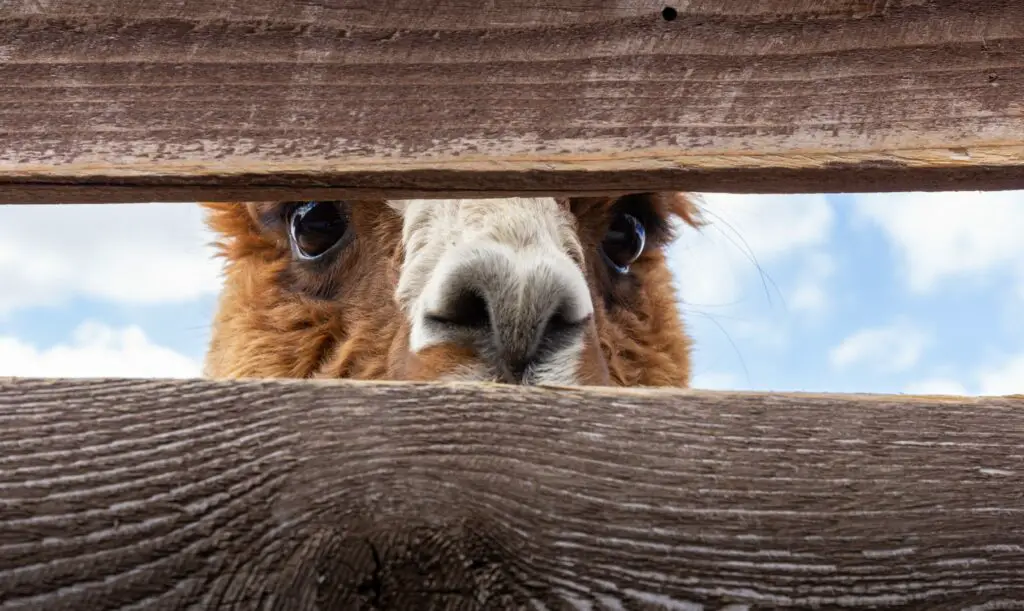
How To Save Money On Alpaca Care?
Assuming you have already purchased your alpaca, there are a few things you can do to reduce the cost of care.
First, if you live in an area with cold winters, you will need to purchase hay for feeding. You can save money by buying hay in bulk or growing your own.
Second, alpacas require yearly vaccinations and regular deworming. You can save money on these costs by working with a local vet who offers discounts for multiple animals.
Finally, be sure to trim your alpaca’s nails regularly. This will help prevent overgrowth and costly hoof problems down the road.
Are Alpacas High Maintenance?
Alpacas are not high maintenance animals. They are actually very easy to care for. The biggest thing you need to do for them is provide them with fresh, clean water and plenty of hay.
You also need to keep their pasture or paddock clean and free from debris. Other than that, they don’t require much in the way of care.
Why Do You Need 3 Alpacas?
The average lifespan of an alpaca is 20 years, but they can live up to 25 years with proper care. Most alpacas live in family groups consisting of a breeding male, a few females, and their offspring.
You need to have at least 3 alpacas to form a herd in order to breed and have offspring. Alpacas are monogamous and will only breed with one other alpaca. Anything less than that will put stress on the animal. Alpacas are also social animals, and without a herd to interact with they can become lonely.
These family groups occupy a home range of 10-30 acres and often graze together on the same pasture. Alpacas are very social animals and do best when they have companionship, so it is recommended that you have at least three alpacas.
Revenue Opportunities from Alpaca
There are many ways to generate revenue from alpacas, and the amount of money you can make will depend on the number of alpacas you have and how you choose to utilize them. Here are a few ideas:
– Sell their fiber: Alpacas produce a soft, luxurious fiber that can be spun into yarn or used for other textile applications.
– Use them for breeding: Because of their valuable fiber and friendly dispositions, alpacas make great breeding animals and can command high prices.
– Sell them as pets: While not as common as dogs or cats, some people do keep alpacas as pets, and they are willing to pay good money for a well-cared-for animal.
– provide alpaca tours: Alpacas are gentle animals that make great tour guides. They are also good for teaching children about agriculture and animal care.
With proper care and management, alpacas can provide a significant source of income for their owners.
Conclusion
Keeping an alpaca can be a wonderful, rewarding experience – but it does come with a cost. We hope that this article has helped shed some light on what you should expect to pay for the care and upkeep of your own alpaca. From food and housing to veterinary care, there are plenty of costs associated with owning one of these lovely creatures. However, if you’re willing to put in the work and make all the necessary investments into your new pet, we sincerely believe that welcoming an alpaca into your life will be worth it in every way.
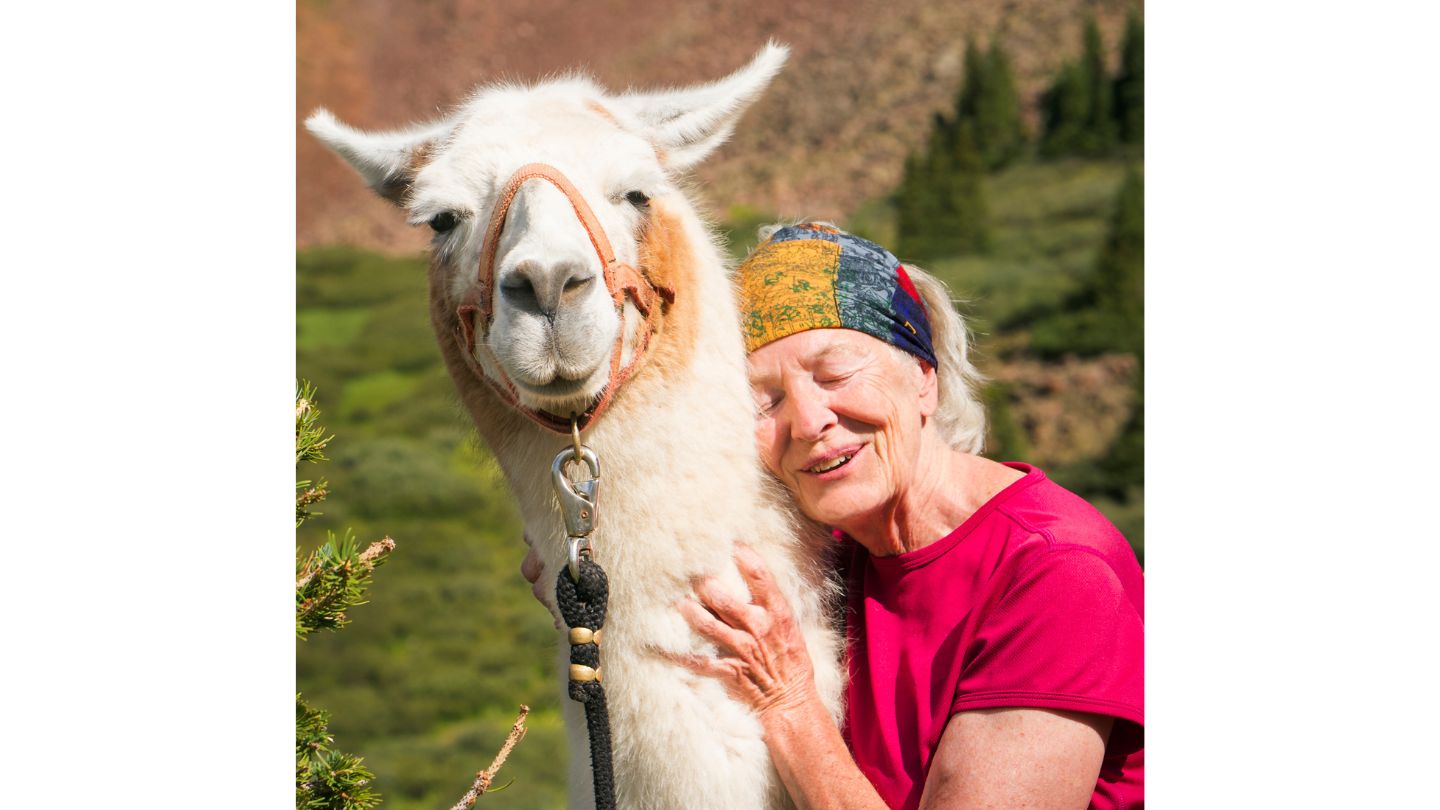
Hi, I am Dale. My husband and I bought our first llama, an 18-month-old male llama, Pumpernickel, in 1984. Since then, they are evergrowing; LlamaWeb is intended to provide information about llamas for people interested in these South American camelids.


